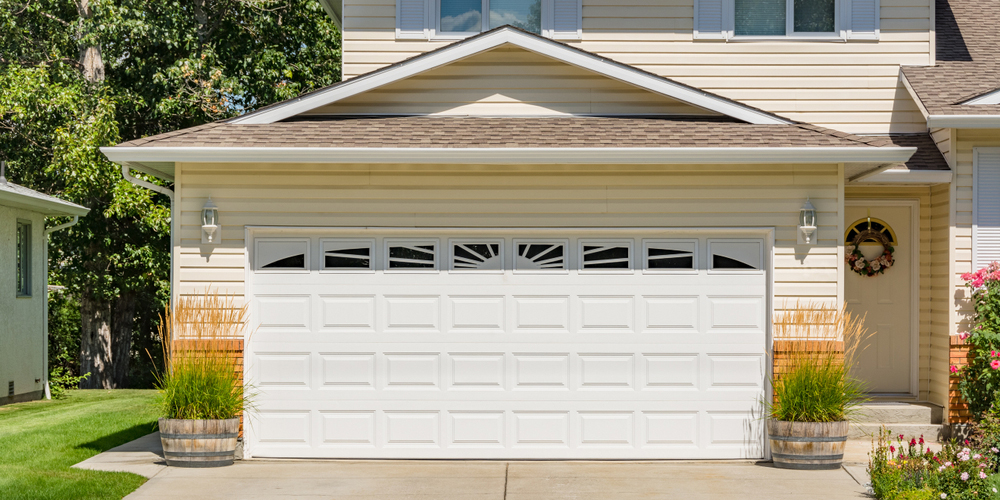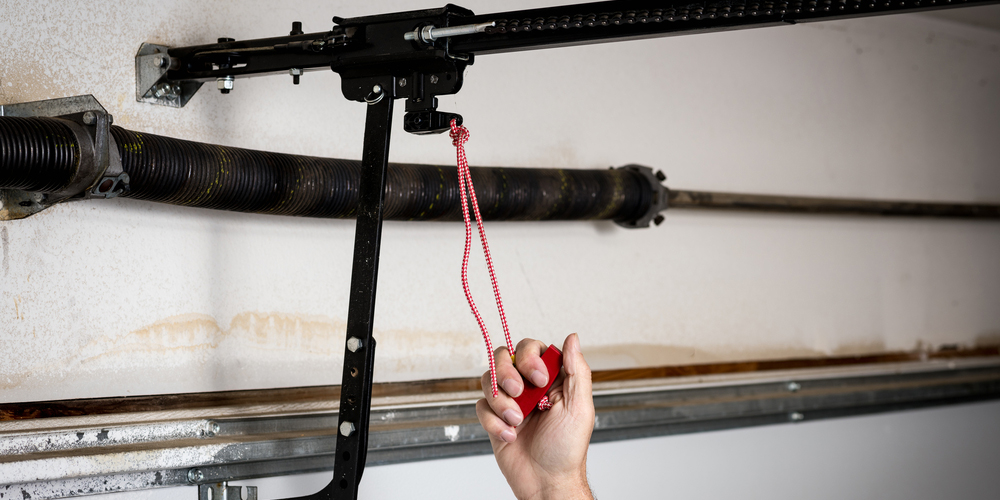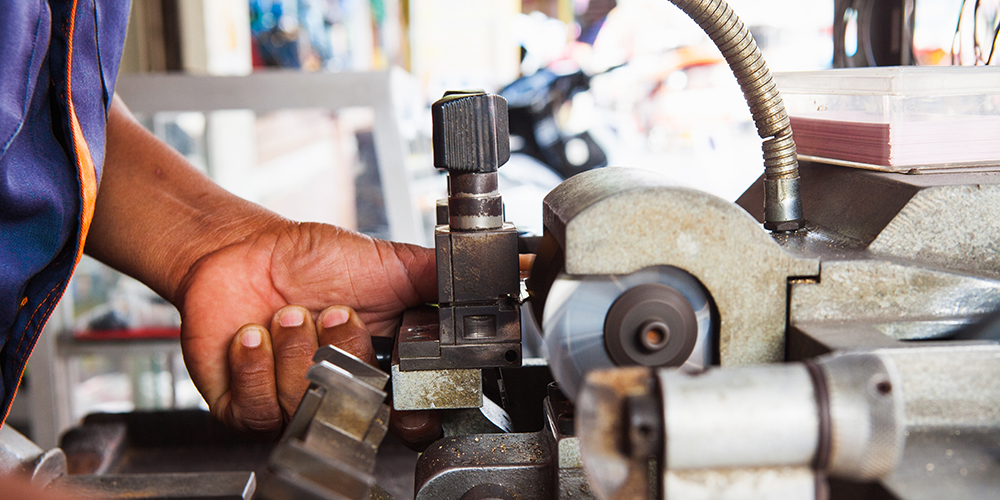Lock Blog
A resource for consumers, locksmiths, and security professionals
A resource for consumers, locksmiths, and security professionals

In this article, we will be going over what to do when you find yourself in any manner of garage door lockout situations. Garages are unique structures, so there are some unique considerations compared to being locked out of your house. When you are locked out of your garage, these differences are your boon because these structures are less secure. And although a lack of security does not sound beneficial, it is when you need to open a locked garage door.
The best ways to deal with a garage door lockout include:
The reasons you are locked out of your garage directly translates to the methods you can use to get back inside. When you are looking for DIY solutions for your garage door lockout, you have to understand the reason for your lockout. If you cannot diagnose the issue through troubleshooting, call a locksmith and get their professional insight.
When it comes to electronic locks, the motors can break down or stop working due to a lack of power. When you are locked out because of a malfunctioning motor, the reason for the mechanical failure is not important. All that matters is that the track is not jammed or stuck by any means. When the problem lies solely with the electric motor, you will be able to solve your garage door lockout by pulling the manual release cord.
Refer to the section below on manual overrides for more information on the specifics of this solution to a garage door lockout. Also, keep in mind that you may be able to make use of several other solutions. Depending on the tools you can access and other possible points of entry for the garage, exploiting manual overrides may not be the fastest or most practical fix.
Advice for broken motors:
At the moment of your garage door lockout, you are not going to be worrying about how to fix your broken lock. That comes later. At this moment, you just have to consider the inevitability of replacing your lock. Once you acknowledge that the lock will need to be replaced, regardless of what you do to get inside your locked garage door, you now have all destructive entry methods at your disposal. For a broken padlock, bolt cutters should do the trick. For other locks, you will need access to power tools (which are likely stored in the garage).
Removing broken locks can be made more difficult by anti-burglary measures such as hardened steel pins, anti-drill plates, shackle shrouds, ceramic inserts, etc. When you move on to the section on destructive entry, be aware that the basic concepts outlined there are unlikely to work if your lock utilizes these high-security measures. High-security locks can still be destructively opened, but they will require professional knowledge.
Advice for broken locks:
Whether you have lost your keys entirely or locked them inside your garage, the fact remains that there is nothing wrong with your lock. This increases the number of potential ways to solve your garage door lockout. Spare keys can open your garage door, or the lock can be manipulated open. Ideally, you will have access to a spare key by way of another resident of your home, landlord, or trusted neighbor. If there is no way to get a key, you will need a locksmith or know how to pick open the lock.
I would not recommend learning how to pick locks while in the midst of a garage door lockout. And because there is nothing wrong with your locks, you should refrain from using any destructive entry techniques. Unless your keys are locked inside the garage, you will need a locksmith to make new keys from scratch. So consider calling the locksmith for the full service.
Advice for no keys:
Having a key break off in your lock can leave you in very similar circumstances to having no keys at all, but there are some potential differences to cover. The first is that you need to remove the broken key out of the lock. Once the key is removed, you may have an extra key that can be used to unlock the door. If you do not have an extra key, a locksmith can still make a copy of the broken key. Just be sure that when you are removing the broken key, you do not also end up breaking the lock.
If they are done incorrectly, certain methods of removing a broken key from your locked garage door can harm your lock. For example, super glue can bind pins together so there will be no way to open the lock without using some form of destructive entry. If you will already be calling a locksmith to make you a new key, consider having them handle the entire garage door lockout from broken key removal to key duplication.
Advice for broken keys:
We already outlined or alluded to many of these solutions in the sections above, but now we will dive a bit deeper into these methods. It is important to remember that if you do not feel comfortable or confident performing these methods yourself, that you should call a locksmith. There is a significant risk of damaging your garage door, side doors, door tracks, and bodily harm if these techniques are inappropriately applied.

On automatic garage doors, there will be a manual release cord that you can pull, which will release the garage door and allow it to move freely. If you have already secured the manual release to prevent common burglary tactics, move on from this step as your upgraded security is going to thwart you just as it would a thief. And if you haven’t, once you have realized how simple the manual override is to exploit, you may want to secure this.
To manipulate the manual release for your automatic garage door from outside, follow these steps:
Watch a video of the process here for an idea of how it looks from inside the garage. And once you are done, investigate the various ways to lock a door without a lock so a criminal will not be able to exploit this weakness. A zip tie on the hasp or lining to block inserted tools are two popular solutions. However, once you protect yourself in this way, any future garage door lockout will not be as easy to solve.
Attached garages and some detached garages have an access point besides the garage door. Usually, a locked garage door will be easier to open than a locked side door, but not always. There are many ways to unlock a door without a key, several of which can be tried with very little practical experience. But as a first step, make sure to double-check that your side door is actually locked. Side garage doors are often neglected and fall into disrepair so you might not need to unlock the door as much as you need to fix a stuck door latch.
In cases where the side door of your garage is locked, you might be able to utilize the credit card method. If the door only uses a keyed handle/knob, this method should work well. It will not open deadbolts or padlocks and relies on spring-loaded latches, which can be depressed with slight pressure. Just make sure not to use an active card, as this method will likely bend, scuff, and otherwise damage the plastic.
How to open a door with a credit card:
If this doesn’t work, your latch may have the sloped side facing away from you. In which case things will start to get a bit too complicated. Suffice to say, you will have to cut the card into a hook shape and attempt to retract the latch by hooking it and pulling it toward yourself. But you will not necessarily be able to know from this failure how the latch is positioned. The lock could be broken. Which is even more likely if these locks are holdovers from the previous resident. Just another reason you should change locks on a new house.
Some garage doors are secured with a hasp and padlock. The lock should be visible from outside the garage on the left or right side with a sliding bolt securing into the wall. This padlock and hasp may also be installed along the bottom of the door, so the bolt slides into the ground. If you are using an inexpensive padlock you purchased from a big box store, it may be vulnerable to shimming. Many padlocks have anti-shim technology, but most of the mass-produced and widely available padlocks only provide the illusion of security.
To use a shim to solve your garage door lockout, you will need to make a shim. Padlock shims can be made with a pair of scissors and one aluminum can. Be careful when using your improvised shim because it is is very easy to cut yourself on the metal edges. It is also necessary to be delicate while using these devices to prevent damaging the shims and rendering them useless. You can check out a video demonstration on how to make shims and use them here, but we will also go over the steps.
How to make a shim:
How to shim a padlock:
If this does remedy your garage door lockout, it could be because the lock does have anti-shim security. It could also be due to the incorrect application of this strategy. Whether the shims are incorrectly made or improperly used, there is a chance for operator error is quite high. So don’t hesitate to call a professional locksmith to assist you if you are having any difficulties.
Destructive entry is to be used when your security is too competently assembled to be undermined with bypasses, or if your lock is already broken. As a result of using destructive entry to solve your garage door lockout, the lock will be broken. The most universally reliable form of destructive entry is drilling a lock. As long as you can retrieve, borrow, or purchase a power drill, you should be able to drill out the lock cylinder.
How to drill a lock:
A garage door lockout caused by a broken lock can be that simple to open, or so complex that you need a locksmith. With a padlock, your garage door lockout solution can be as simple as cutting off the lock, which should not damage the door or hasp. Bolt cutters should be able to remove almost any lock, besides the strongest padlocks. Simply replace the lock when you are finished.
If you would rather keep your lock intact, or don’t have the tools to remove the padlock, call a locksmith. A broken padlock will need to be removed no matter what, but a locksmith technician can look over the particulars of your garage door lockout and let you know all the options. In many cases, a padlock can be picked open, and a new key can be made from the lock. And if it is not possible to bypass or pick the lock, then the lock may still need to be cut. Even the best padlocks can be cut by a professional locksmith.

It may be possible to make new keys as a way of solving your garage door lockout. If you have lost your key or your key has broken in the lock, getting a new key is a possible solution. Similarly, there may be a way to get a new garage remote that will renew the automatic function of an electronic garage door lock. This will require professional intervention, but it may be worth investigating when you are locked out of your garage.
If you need a new garage remote, not all locksmiths will be able to provide this service. However, the average locksmith should be able to replace just about any other key. As long as they have your key blank and a way to decode the physical lock, they can use a key cutting machine to create a brand new key. The more information you can give the locksmith over the phone, the better equipped they will be to provide or recommend services.
As stated earlier, if you need a new garage door remote, a locksmith might not be the person to call (though some locksmiths also replace these remotes). With that being said, almost no one other than a locksmith will be able to make a key from a lock. So if the reason for your garage door lockout is that you lost a physical key, you may be able to save money by calling a locksmith instead of paying for new locks for your garage door.
Yes, a locksmith can solve a garage door lockout in a variety of ways. Mobile locksmith services allow technicians to come to your location and open your garage. Not every locksmith will have the tools to make new electronic garage door openers, but you can expect them to provide every other service you would need during a garage door lockout.
Being locked out of a garage is different from the considerations you have to make when you are locked in a garage. However, there are many similarities. For instance, when an automatic garage door will not open, you can pull the manual release and allow the door to move freely. If this does not work, call a locksmith to get you out.
Garages may have openings along the perimeter, such as windows, pet doors, vent holes, etc. The garage door might also be ajar or able to open slightly. Always look for the simplest solution to a garage door lockout. There is no need to overcomplicate things. But with all the openings closed and locked tight, you still have some DIY choices. If you find that even the simplest recommendations on this list seem a bit overwhelming, call a locksmith.
Category: How To's, Residential